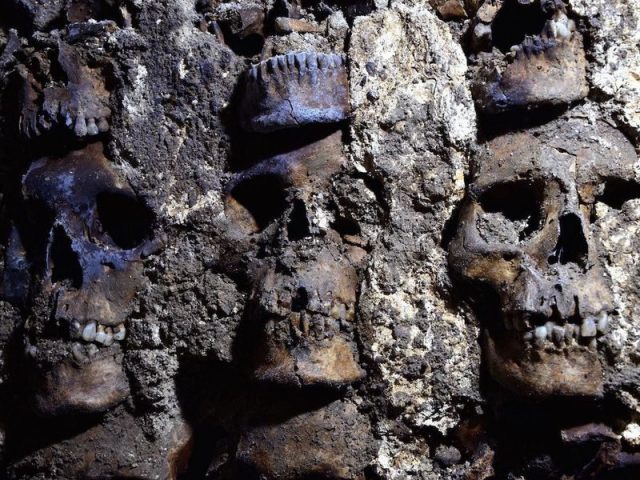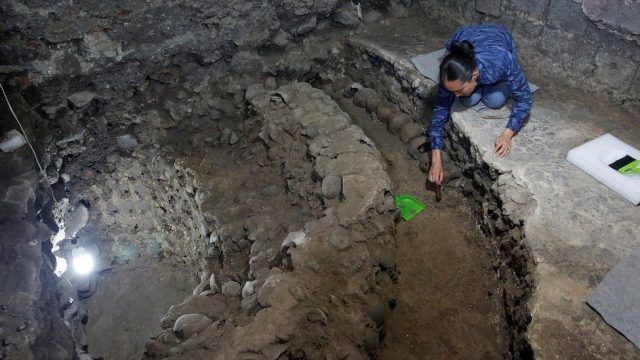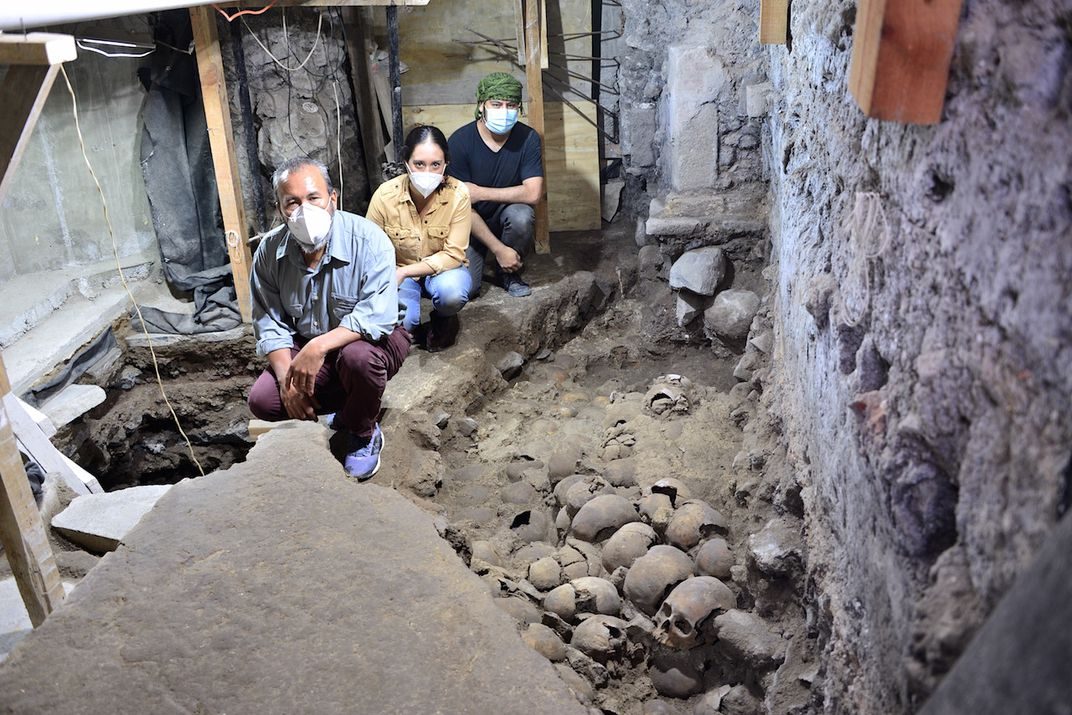Archaeologists made a fresh and frightening find during digging work in Mexico City this month… skulls. An eye-popping 119 of them, arranged in a tower formation!
It wasn’t a shock, as similar sights were witnessed by them back in 2015. The National Institute of Anthropology and History (INAH) have actually been busy in the area for 5 years. The latest bone-based bonanza, resting 10 ft below ground, brings the total number of skulls up to 603.
So what is this tower from people’s worst imaginings? It’s the eastern facade of a huge construction called the Huey Tzompantli, standing at a height of around 15 ft. The diameter of the tower is 16.4 ft according to Smithsonian Magazine.

In a statement INAH refer to it as “the great platform with palisade that the Mexica consecrated to Huitzilopochtli , his tutelary god.”
There were no less than 7 such “tzompantli” – or “skull rack” – in what used to be Tenochtitlán, the Aztec capital. This example dates from between 1486 and 1502, when the Tlatoani Ahuízotl government was in charge. Sky News writes the skulls are “arranged in a circle-like shape, on top of one another and with the gaps filled with mortar.”
How did the unfortunate owners get there? Human sacrifice was a way of life during those times, with warriors literally losing their heads in order to satisfy higher powers. BBC News quotes Raul Barrera. The archaeologist comments the victims became “gifts for the gods”. They were possibly viewed as “personifications of deities themselves”.
Tales of glory-seeking aside, it should be noted women and children are amongst the deceased. Smithsonian Magazine says there are “at least three children’s craniums” in this east section. The age of the skulls was naturally determined “based on their size and the development of their teeth.”

Before being installed in the Huey Tzompantli, it’s believed people’s heads were displayed on poles. These were inserted through the side. Smithsonian Magazine writes the collection of skulls was “Bonded together with lime”, referencing an article in the Atlantic by J. Weston Phippen.
The writer also mentioned how circles of skulls got wider the higher they went. There’s a mystery over what the bones were supposed to encircle. A formation like that in the eastern facade is seen as unusual.
The practice of creating tzompantli, with the skulls facing inward, was already documented before INAH went to work on their 5 year project. From the 14th to 16th century Aztecs ruled over much of central Mexico. They spoke a language called Nahuatl. After a couple of hundred years their empire crumbled at the hands of expedition leader and arch Conquistador Hernán Cortés.
Troops who marched on the Aztecs were surprised by the grisly business of stacking skulls. The invaders noted details of the practice and tore down towers. The most recent find appears to have suffered damage in its later construction phase, according to INAH. Reports state 3 phases were involved in putting up the tower overall.
Near to the site is another sacred spectacle, the Templo Mayor ruins. As Smithsonian Magazine writes, this Aztec temple was built in honor of Huitzilopochtli and Tlaloc, gods of war and rain respectively. These days the location plays host to the Metropolitan Cathedral, which stands over the Templo Mayor.
The BBC quotes Alejandra Frausto, the country’s Culture Minister. He says the skull tower is “without doubt one of the most impressive archaeological finds of recent years in our country”.
Horrific though it may be to modern eyes, the Huey Tzompantli represented not only an offering to the gods but also guarantees of good fortune. Relying on almighty overseers to safeguard all existence was no doubt a serious pursuit.
Another Article From Us: Untouched for 1000 Years, Hegra Now Open to the Public
That said, it’s given spectators an eerie glimpse of ancient living, just as it did with the Conquistadors centuries before…
